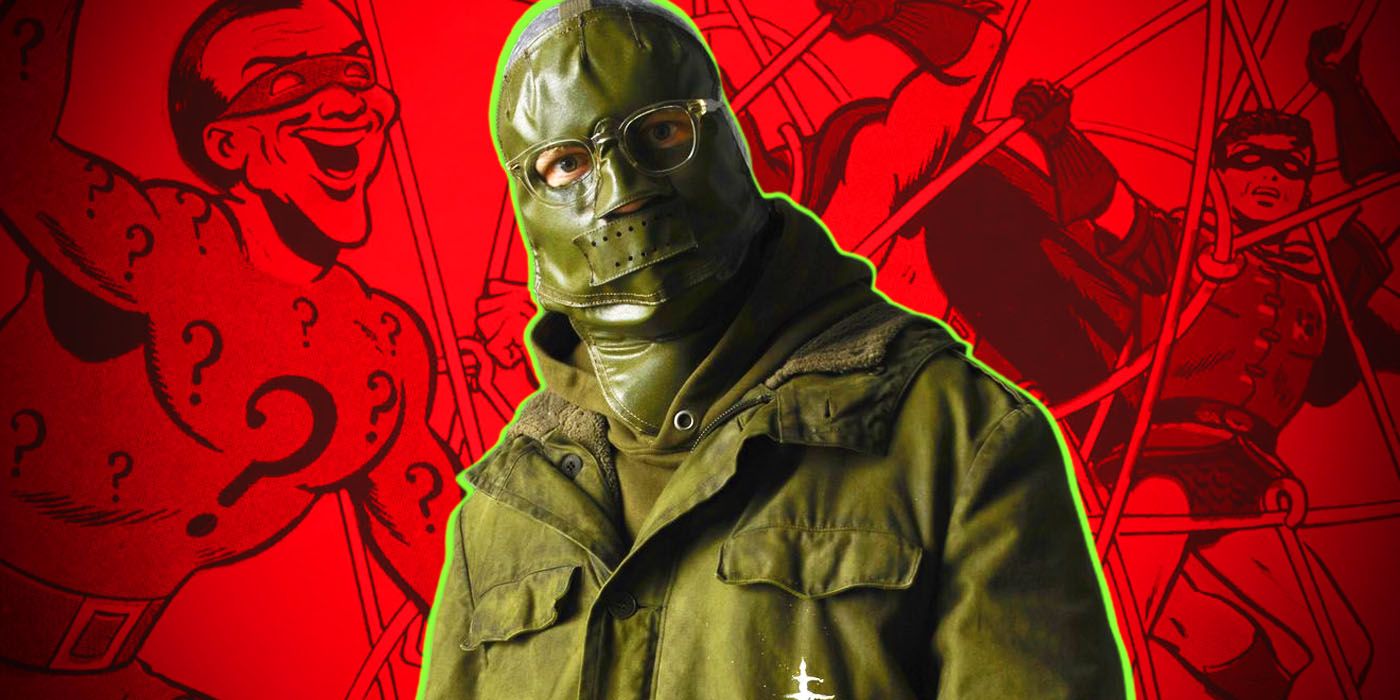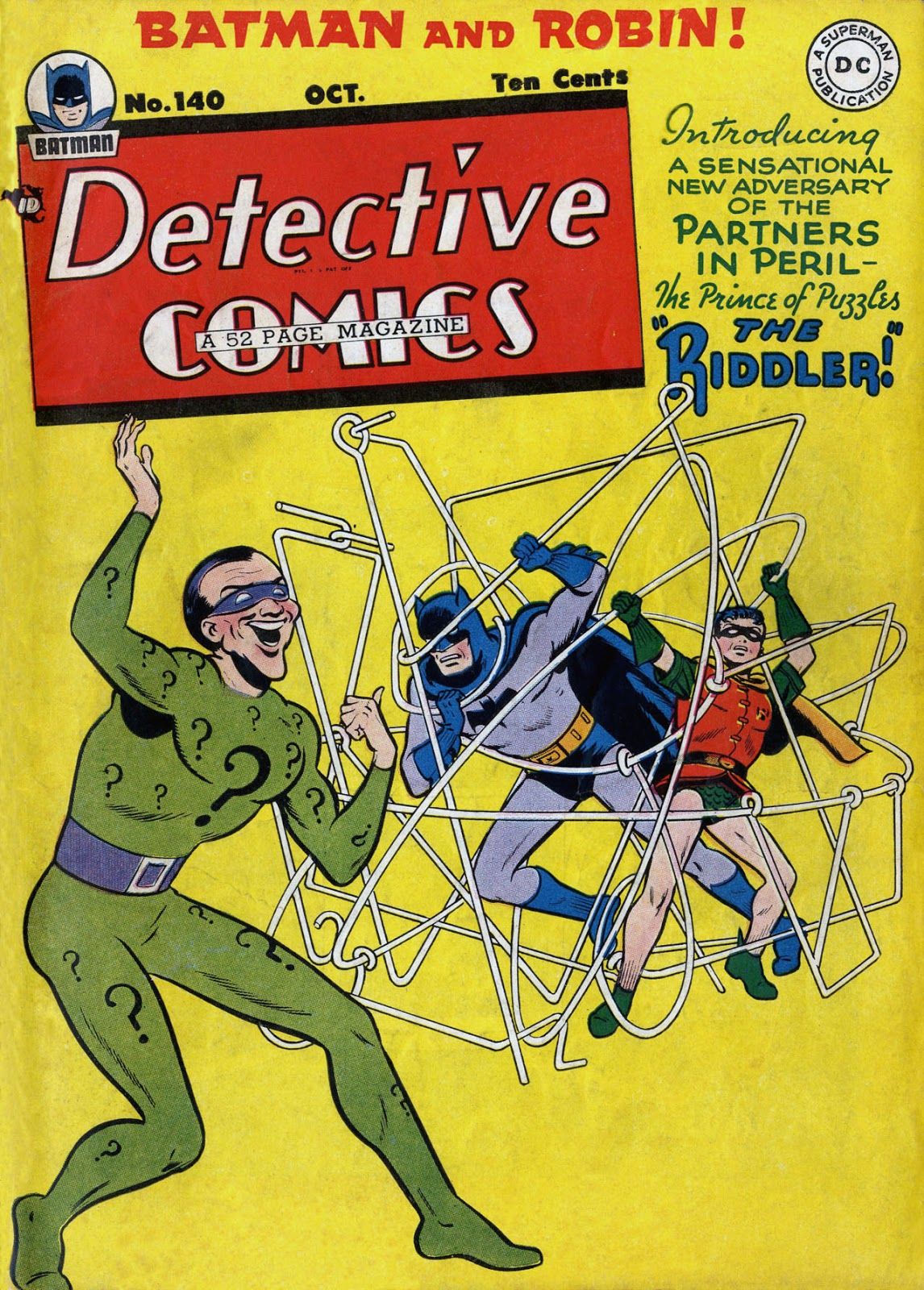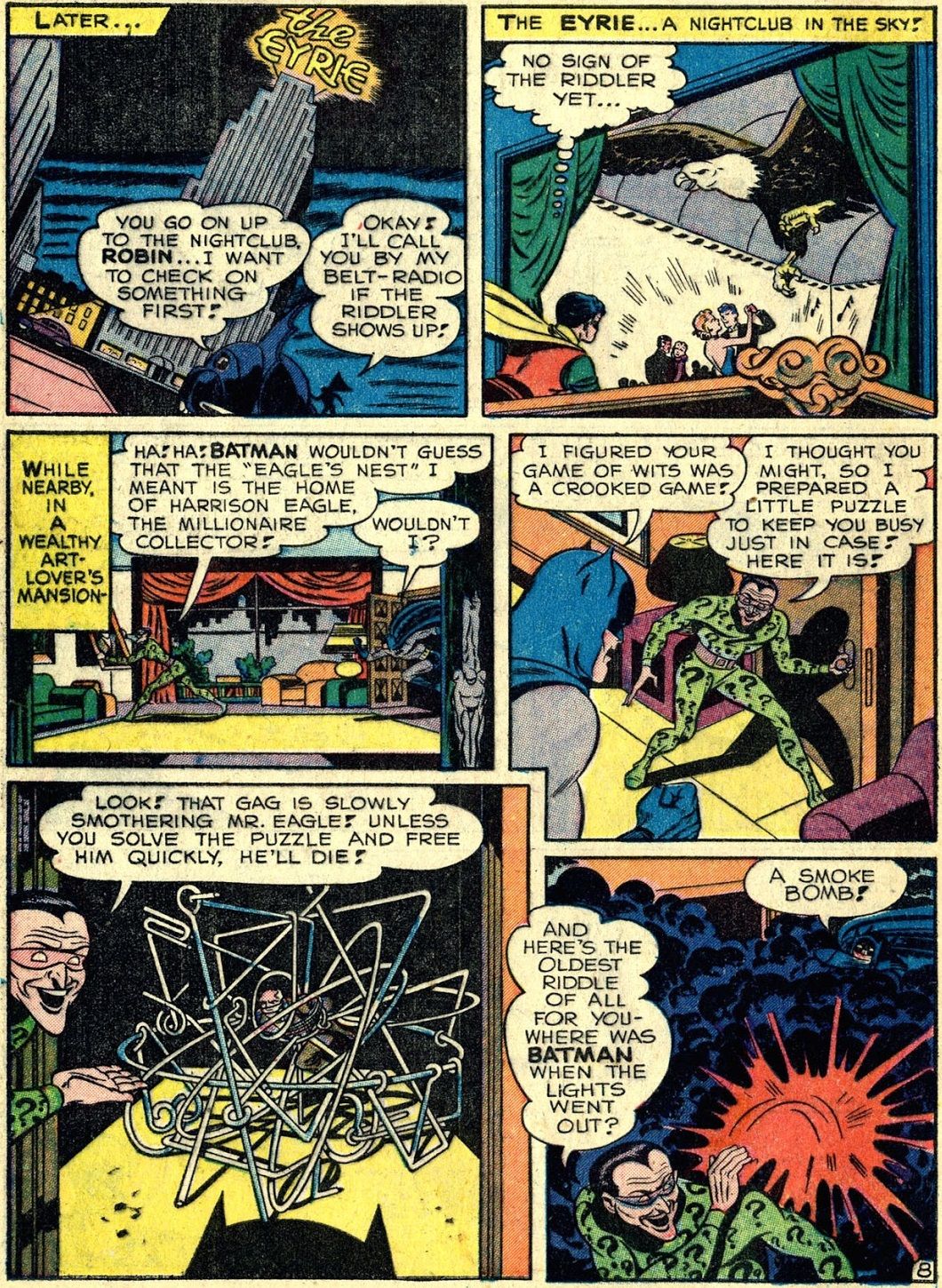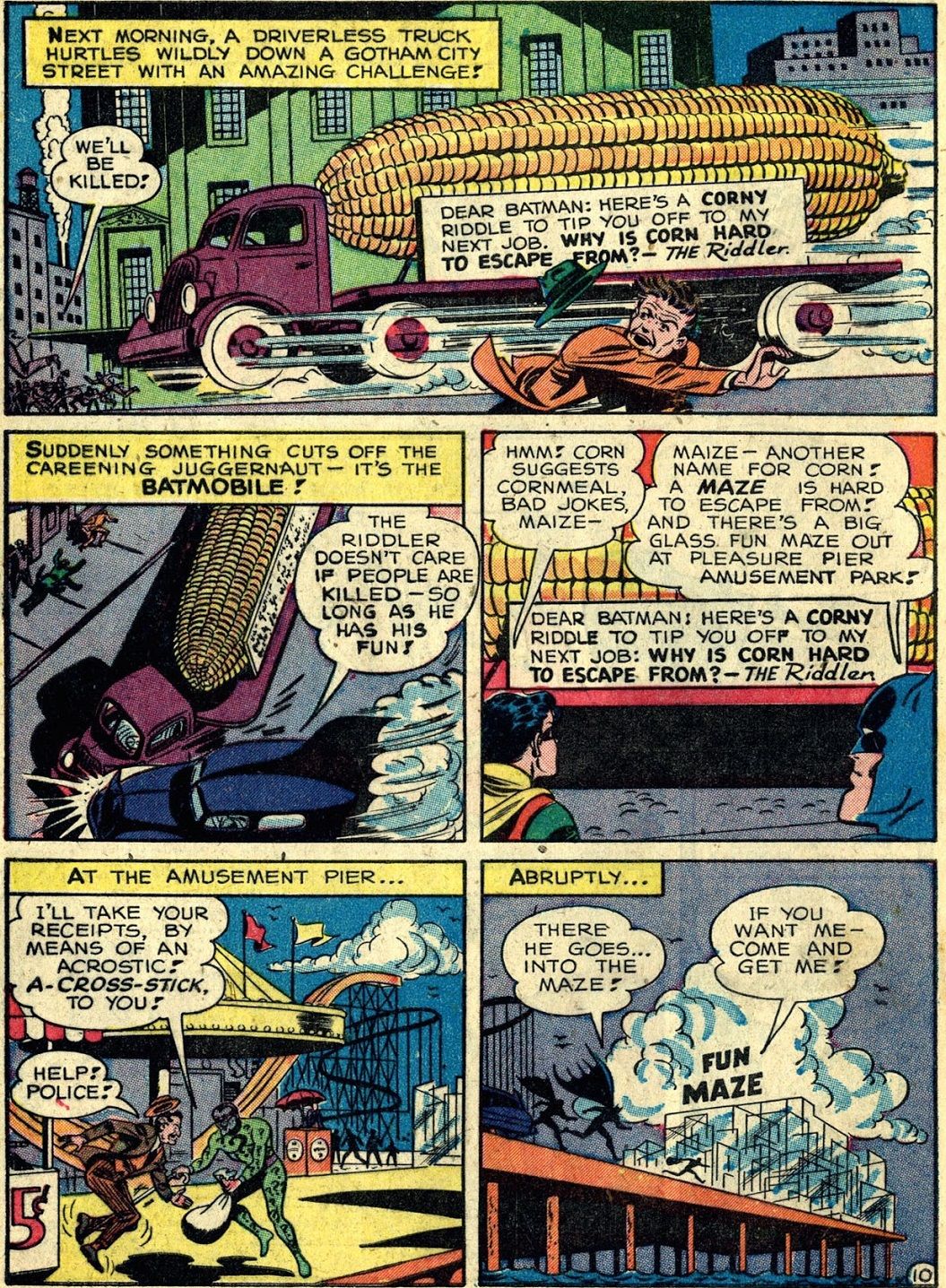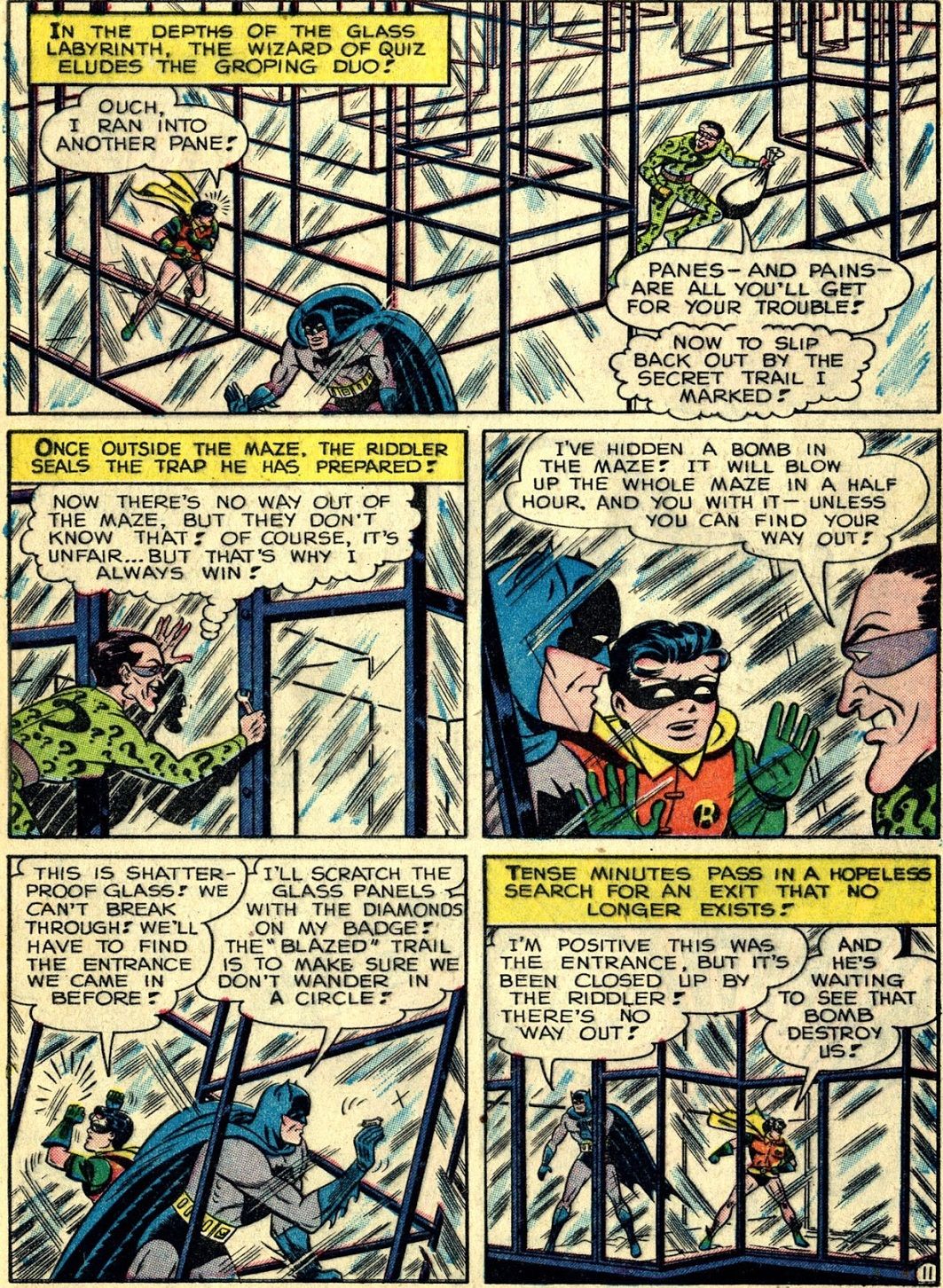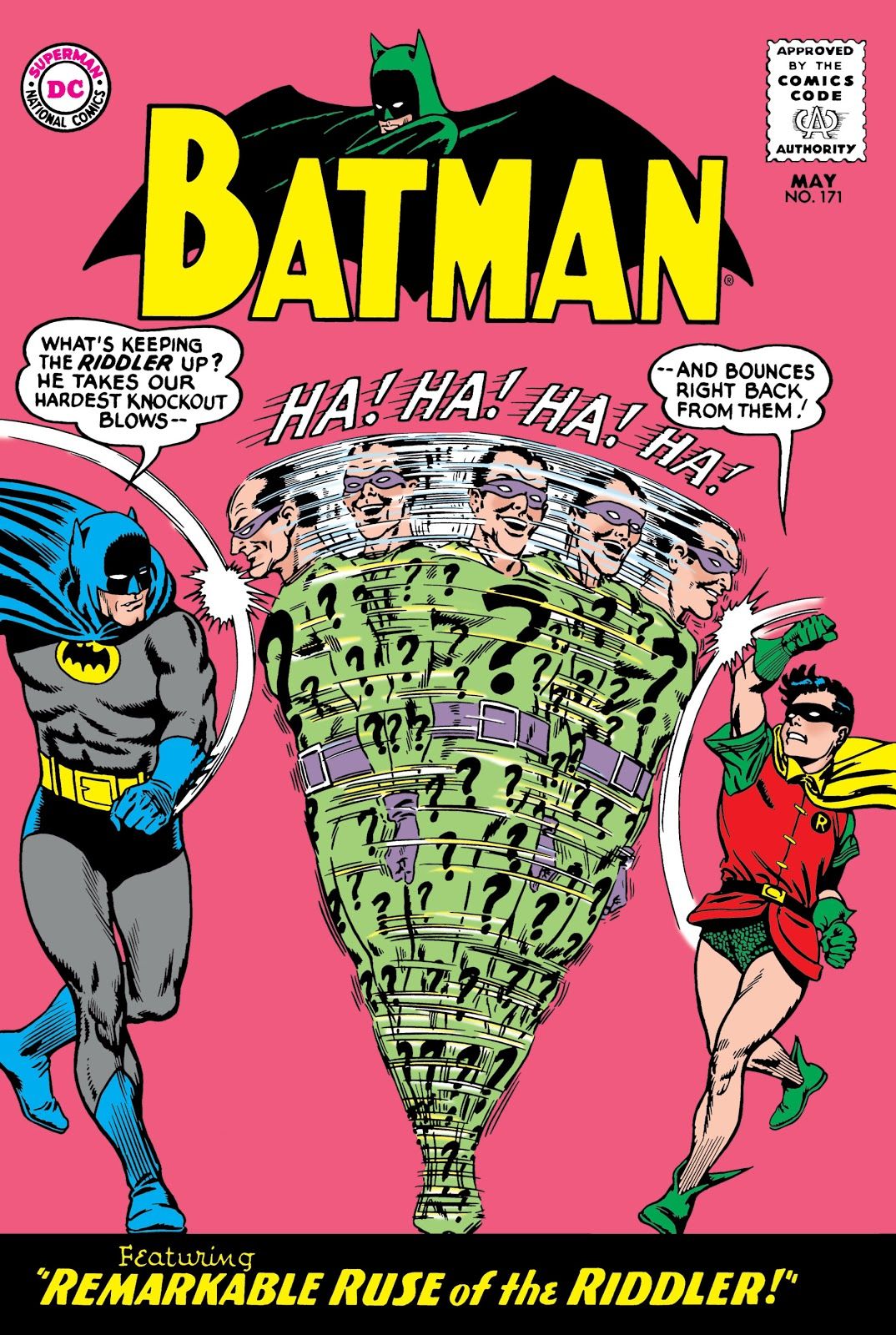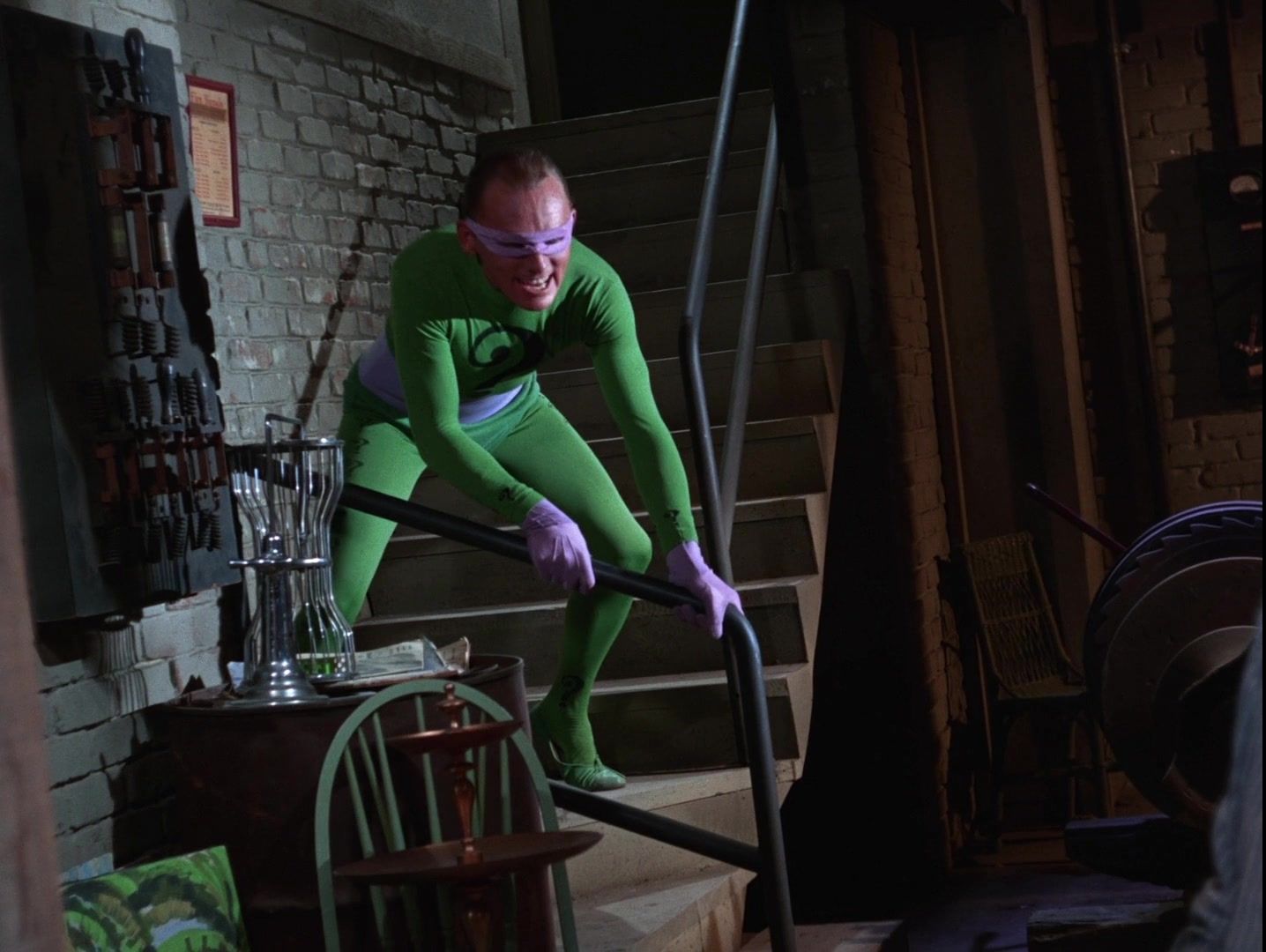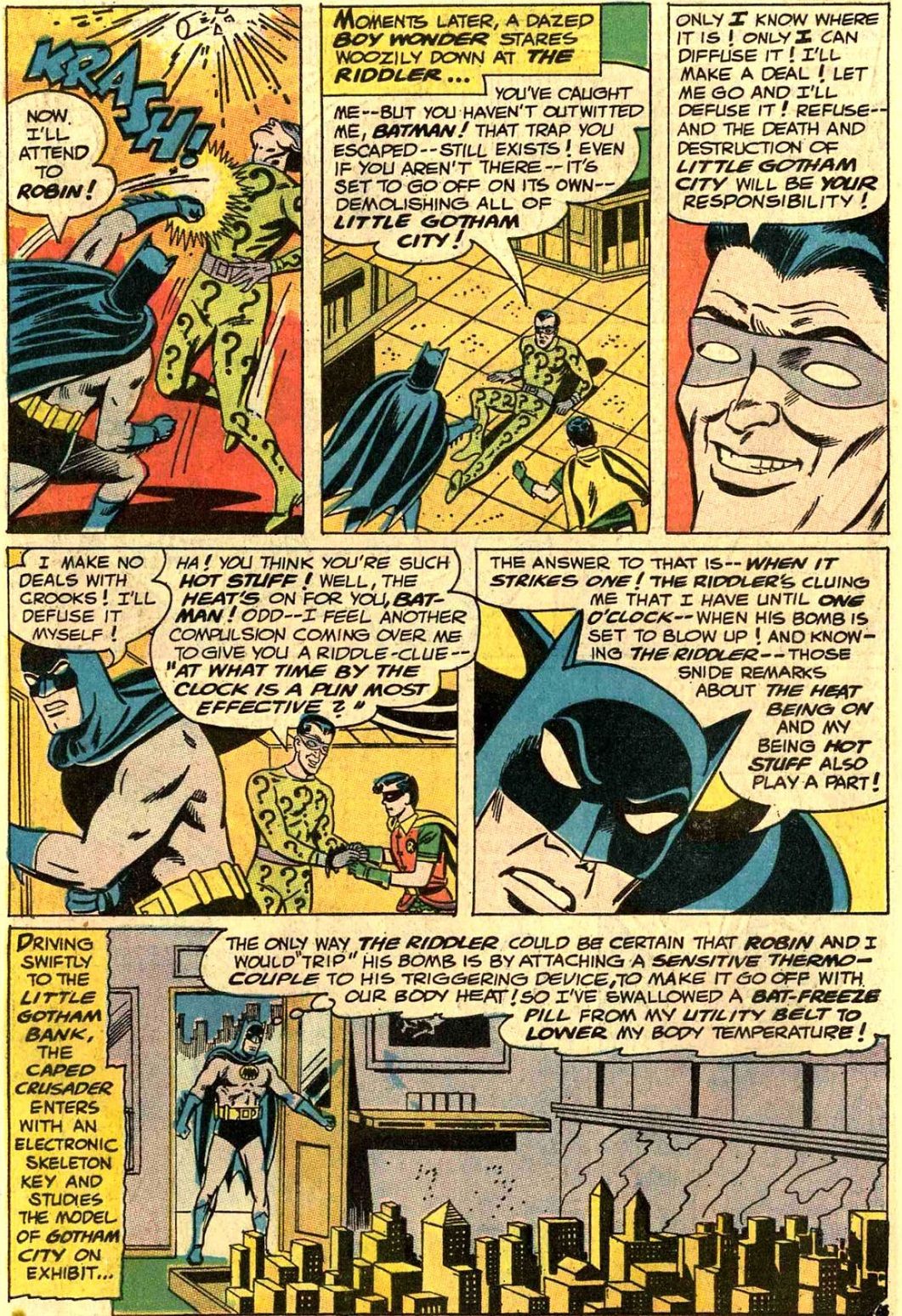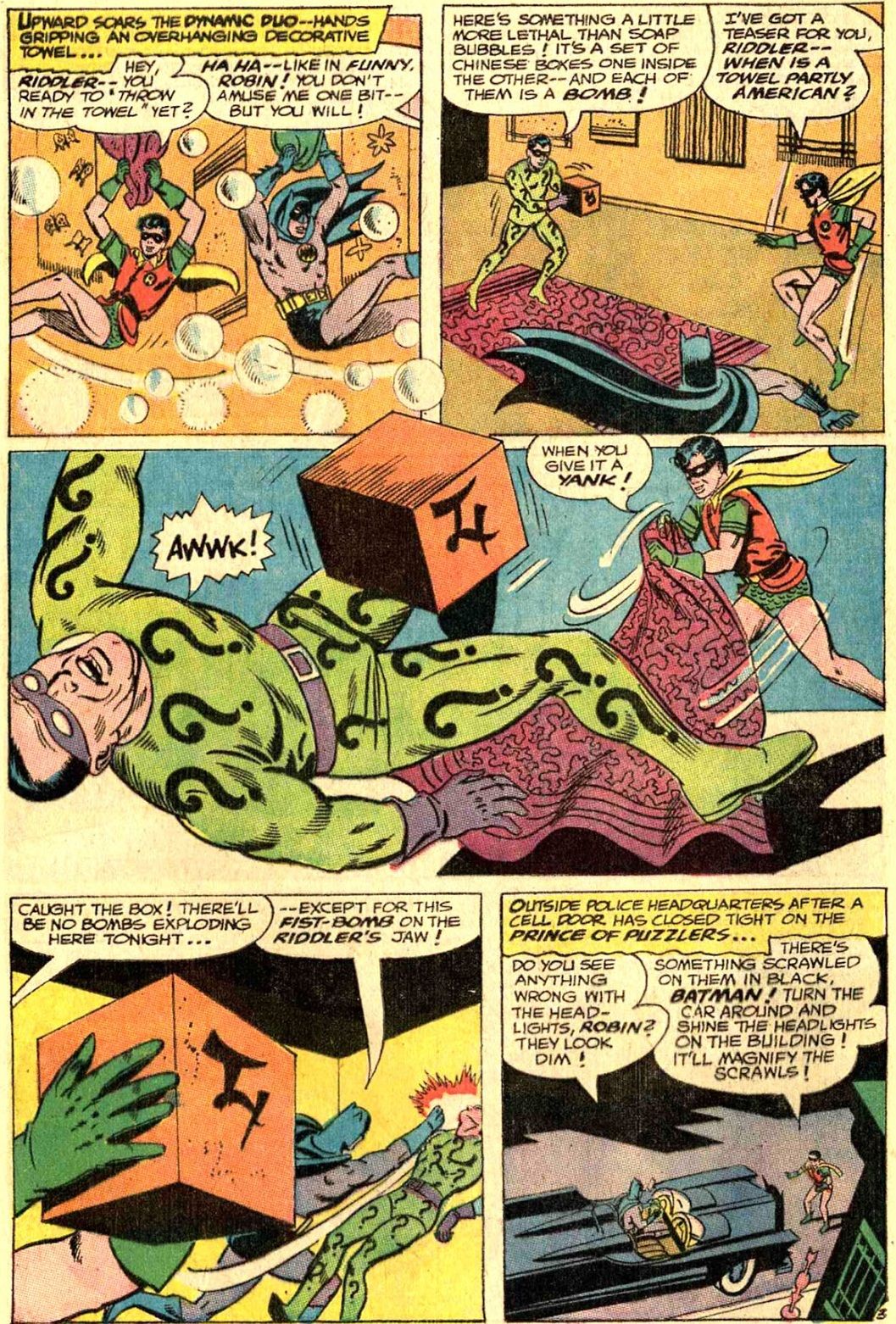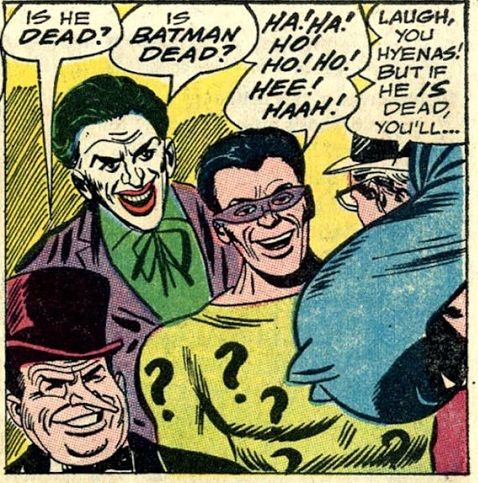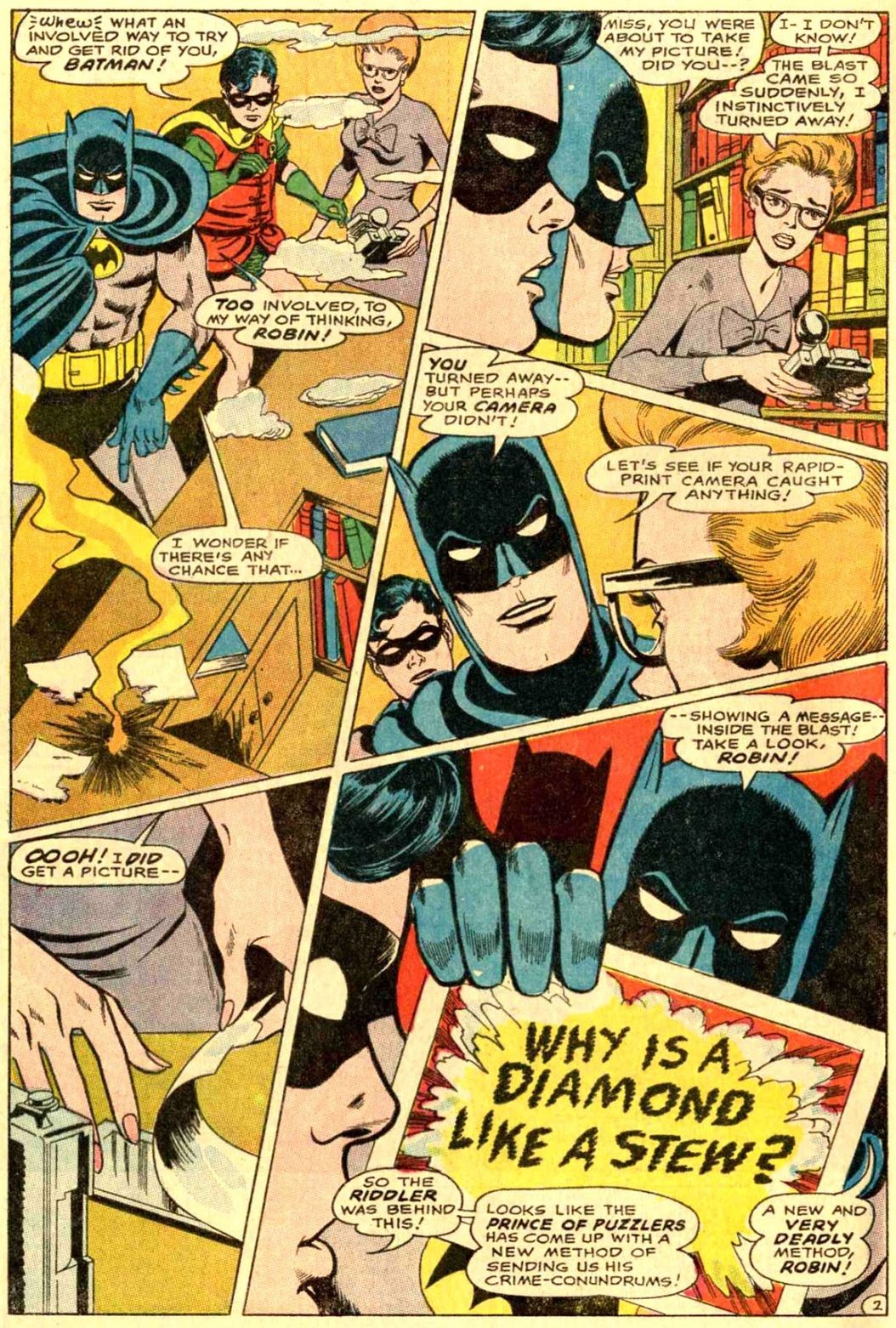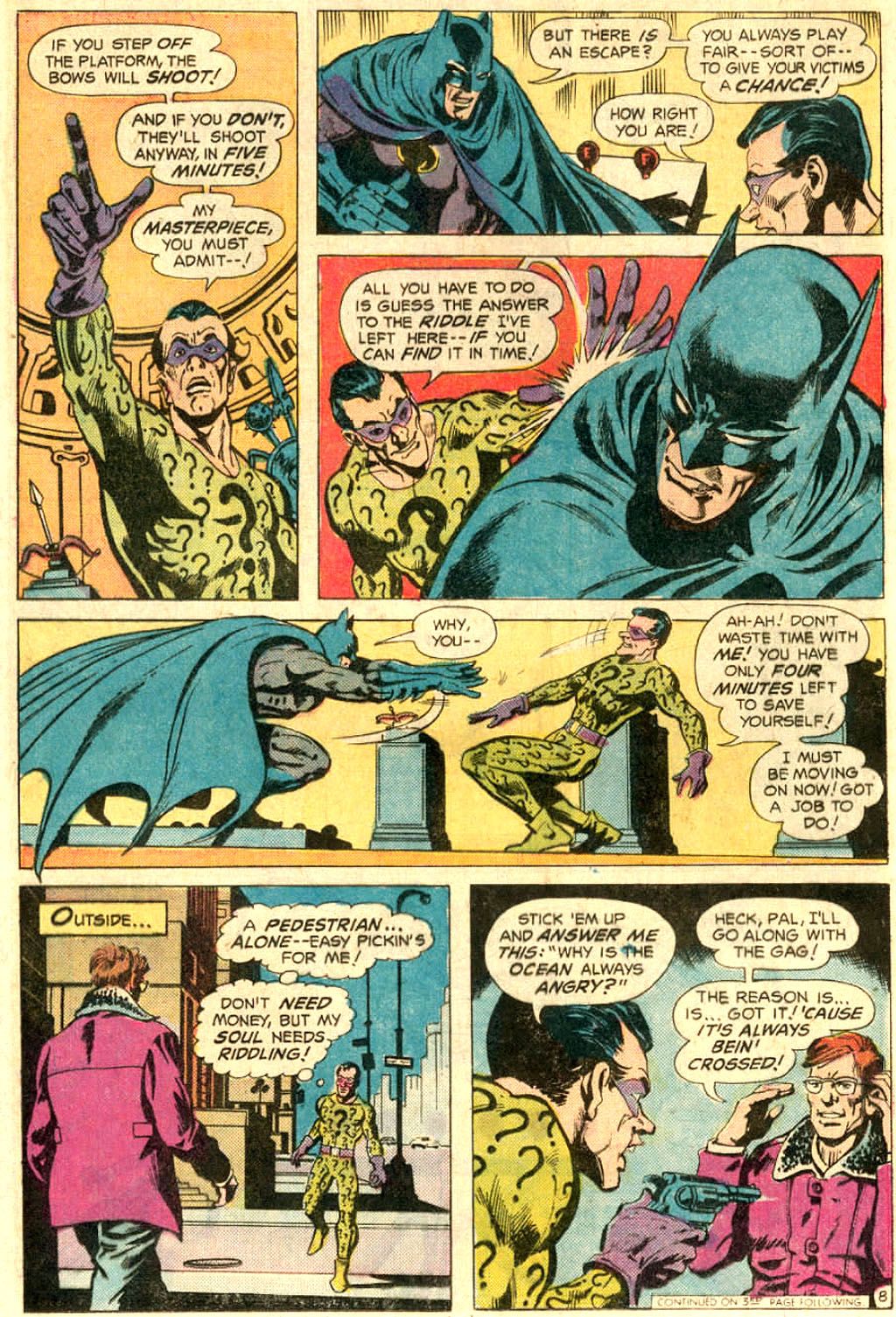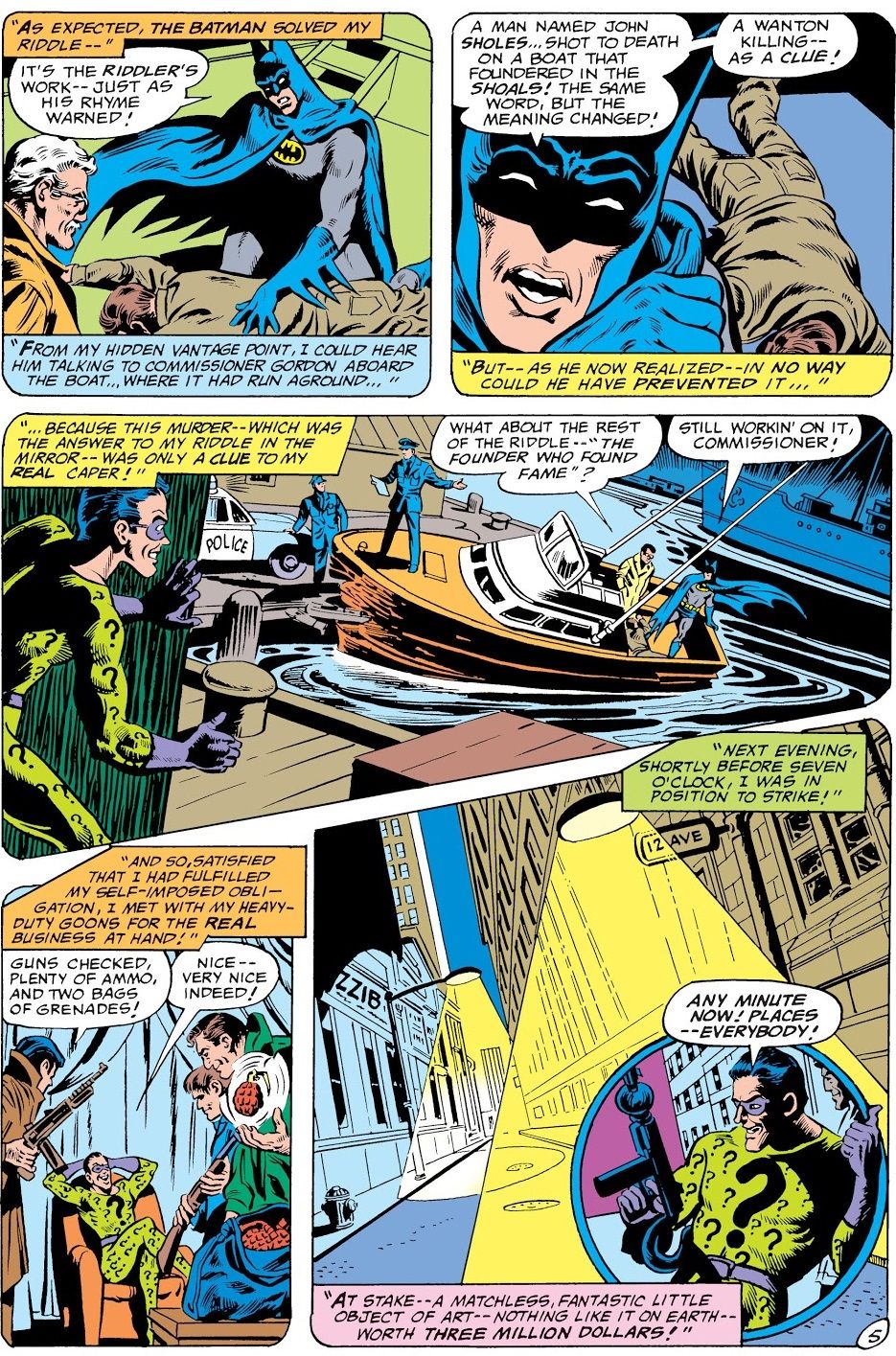Today, we look at when the Riddler first killed someone in the Batman comic books.
In "When We First Met", we spotlight the various characters, phrases, objects or events that eventually became notable parts of comic lore, like the first time someone said, "Avengers Assemble!" or the first appearance of Batman's giant penny or the first appearance of Alfred Pennyworth or the first time Spider-Man's face was shown half-Spidey/half-Peter. Stuff like that.
As you are likely aware of by now, the Riddler has become a much more deadly villain in the comic books over time and he has especially become a lot more deadly in the media adaptations of Batman in recent years. So I thought it would be interesting to see when Riddler first killed someone in the comics.
THE RIDDLER'S GOLDEN AGE DEBUT HAD SOME DEADLY ASPECTS TO IT
The Riddler made his debut in 1948's Detective Comics #140 (by Bill Finger, Dick Sprang and Charles Paris)...
The interesting thing about the character is that, in his first appearance, there really weren't very many actual RIDDLES in the story. The Riddler was more about being a general puzzle guy, ya know? He DID do a riddle in the story, but it was not close to being the central aspect of the figure like it was in future stories. Dick Sprang is one of the most outstanding Batman comic book creators of all-time, but it is interesting to note that he really never got a chance to create that many major Batman characters. By the time that Sprang started on the series, they were mostly just re-using the early villains like the Joker and the Penguin or simple criminal bad guys. The list of Sprang creations is shocking in how small it is, although there are some other decent enough characters on the list, like Killer Moth, Professor Carter Nichols and the Batman of Zur-En-Arrh.
In any event, there is something important that you have to remember about the Golden Age of comic books. Back before the Comics Code came about, criminals were not necessarily killing a lot of people, but they sure TRIED a lot more than they did after the Comics Code came about. And so in that very first story, the Riddler flat out puts a dude in a death trap that Batman has to solve before the guy suffocates to death...
So the Riddler wasn't this happy-go-lucky guy at the beginning, as the dude did some hardcore stuff. In fact, his only outright riddle in his first appearance was on the side of a drieverless truck that he let loose on Gotham's city streets, unconcerned if it killed anyone...
And the end of the story involves a bomb designed to kill Batman and Robin (that instead appears to kill the Riddler himself)...
The oddest thing about the Riddler is that he appears to die at the end of his first appearance, but it's clearly intended to set up his next appearance, which came two issues later. Therefore, Bill Finger knew he would be bringing Riddler back as soon as he wrote the first story, which is is a significant piece of confidence in the character, but then he just didn't use him again for over a decade!!! That's so weird.
THE RIDDLER'S SILVER AGE RETURN STILL HAD SOME EDGE TO IT
Julius Shwartz took over as the editor on the Batman books in the 1960s and he brought one of his star writers, Gardner Fox, with him, and I guess Fox looked through back issues for ideas and found the Riddler, bringing him back in 1965's Batman #171 (by Fox, Sheldon Moldoff and Joe Giella)...
The issue famously was one of the comic books that William Dozier read while developing the Batman TV series, which is why it was adapted for the first episode of the Batman TV series in 1966.
Riddler wasn't really much of a lethal threat in his Silver Age debut (the Comics Code had now been around for over a decade), but sure enough, in Detective Comics #362 (by Fox, Moldoff and Giella), the Riddler is actively trying to kill Batman...
Two issues later, he tries to use a bomb on the Dynamic Duo...
Also, in Brave and the Bold #68 (by Bob Haney, Mike Sekowsky and Mike Esposito), he seemed pretty pumped when he thought that Batman had been killed...
THE RIDDLER'S FIRST COMIC BOOK KILL CAME DURING A LIE ABOUT KILLING BATMAN
However, in general, it seems like the idea is that the Riddler really didn't want to kill, per se, as even when he sent an exploding book to Batman in Detective Comics #377 (by Fox, Moldoff and Giella), it was to give him a clue...
So that suggests that those death traps were never really considered to be death traps by the Riddler, because he always knew that Batman would solve them, so that it is all a game more than anything.
Denny O'Neil played with that idea in Batman #263 (art by Ernie Chan and Dick Giordano), where O'Neil continued to do his new, darker spin on the various major Batman villains, but here, he seemed to establish that Riddler really was ultimately just playing a sort of game...
However, that was not the case in Batman #292 (by David Vern Reed, John Calnan and Tex Blaisdell), in the classic storyline, "Where Were You on the Night That Batman Was Killed?" where Two-Face apparently leads the trial in front of judge Ra's al-Ghul to determine which Batman rogue actually succeeded in killing Batman, who had apparently been murdered (in reality, Two-Face was Batman in disguise and he wanted to learn who killed an innocent man who had been wearing a Batman costume and the person that the villains all believed was the real Batman). Each issue had a different villain testify as to why they were the one who killed Batman. "Two-Face" keeps proving them wrong.
In any event, early in Riddler's story, he murders a guy as part of a riddle...
Now, since Riddler's story about killing Batman is later proven to be false, you could argue that this was also untrue, but the story sure seems to be treat it as having actually happened, so I think it counts.
If anyone else wants to know about an interesting comic book first, just drop me a line at brianc@cbr.com!

